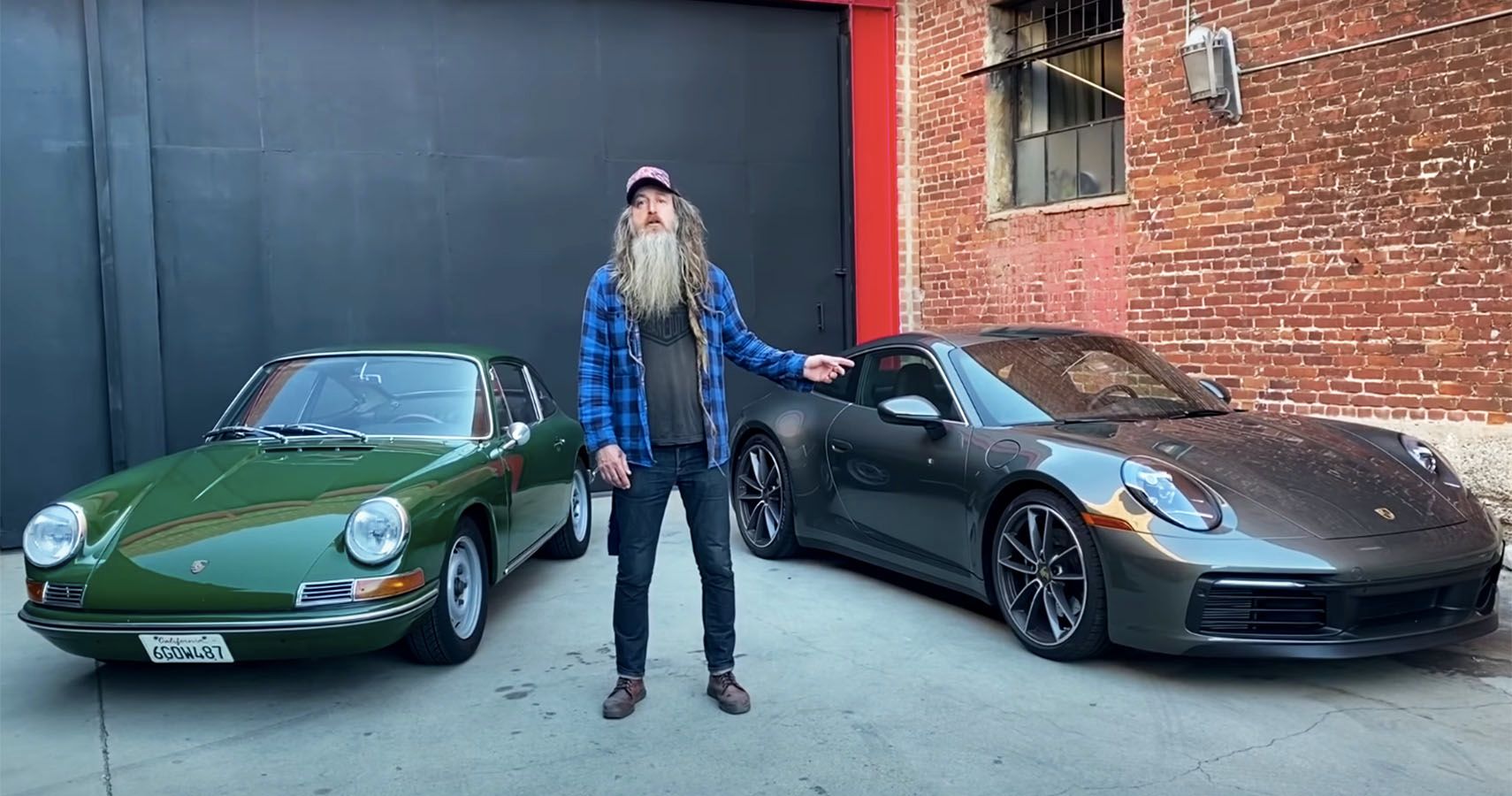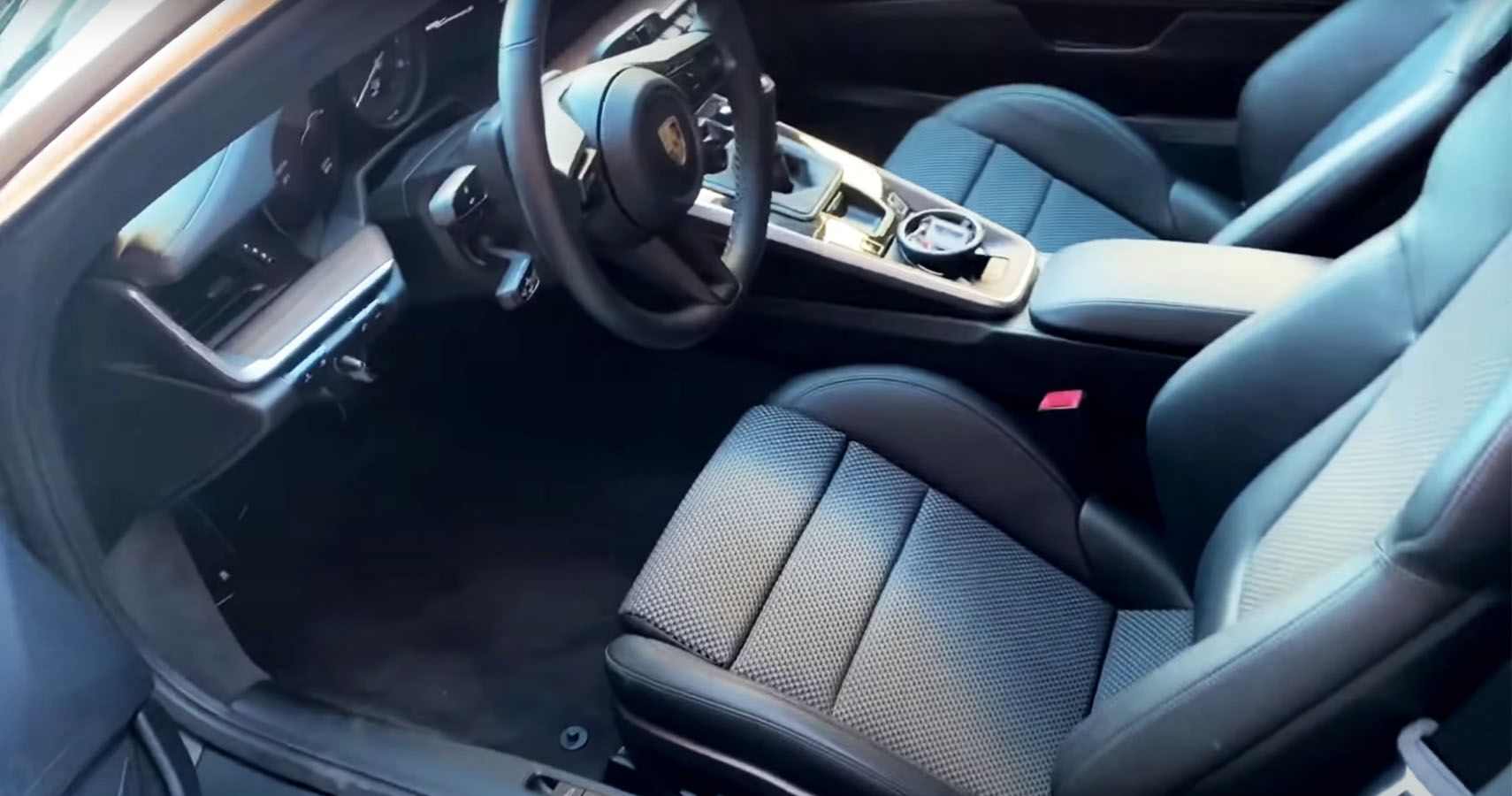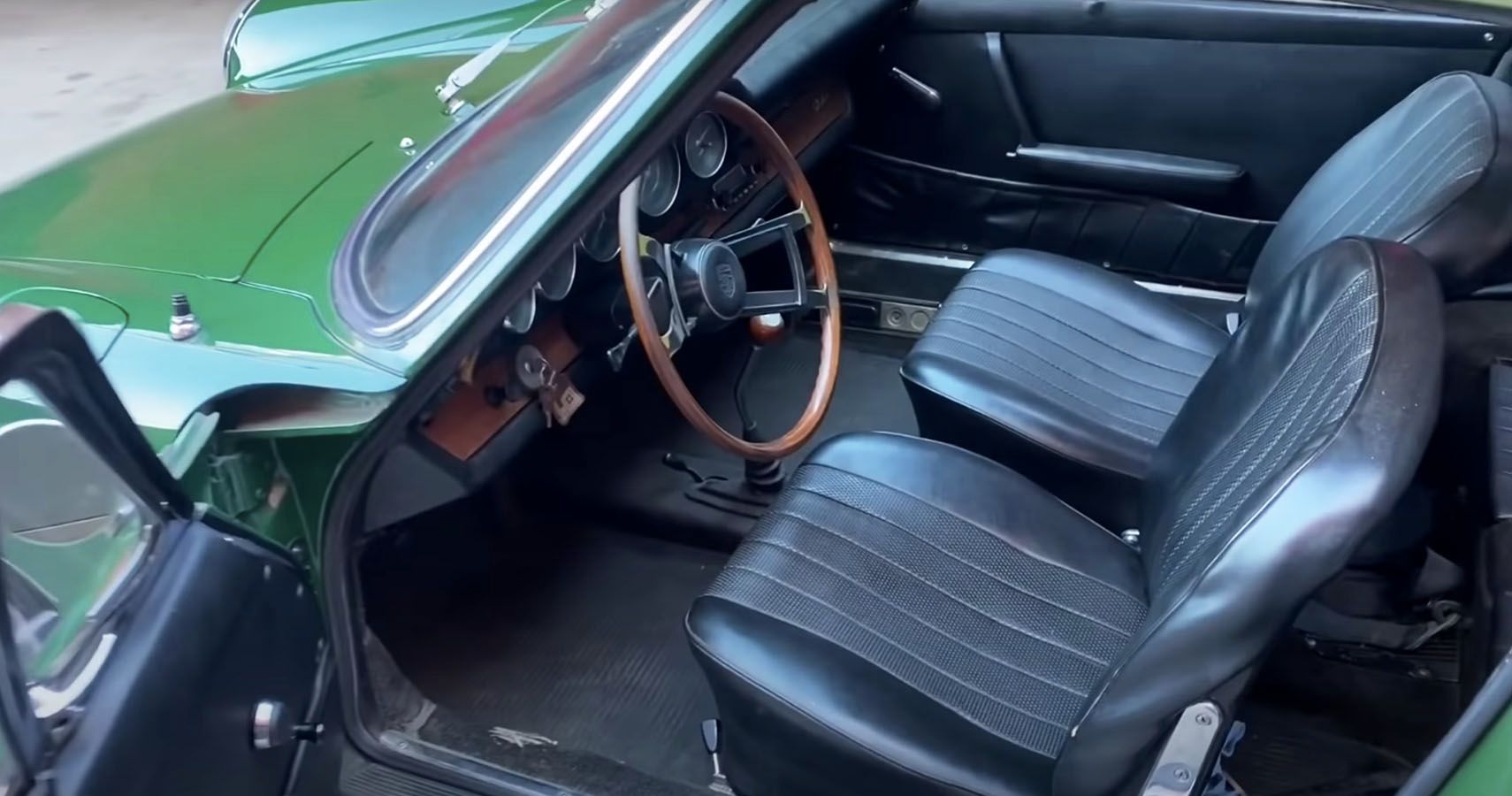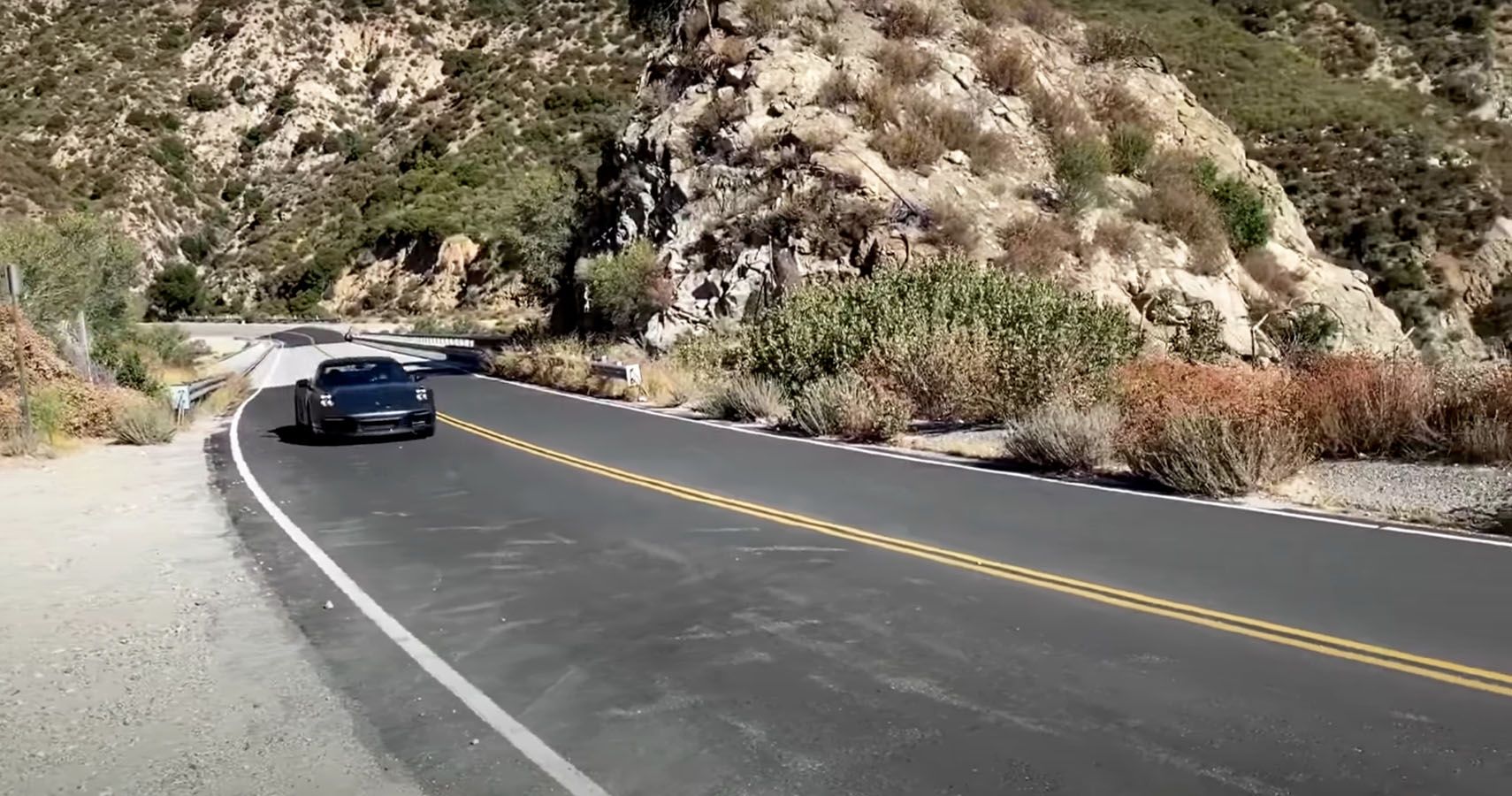Porsche's 911 has enjoyed a continuous production run since way back in 1964 and the original recipe has always remained the same: a flat-six engine hanging off the rear axle, iconic styling, and potent performance within a lightweight package. But as the automotive industry has evolved, so has Porsche — in some ways, the Stuttgart-based company has been an innovator, though certain features of the 911 remain in place as direct (some might say stubborn) references to tradition.
In the late '90s, Porsche purists nearly lost their collective minds when the 911 transitioned from air cooling to water cooling for the 996 generation. More recently, Porsche decided to make another huge shift for the 992-gen 911 by bolting turbochargers on, even for "base" Carrera models. But how does that change the 911's sports car spirit? Well, Porsche influencer and self-styled "Urban Outlaw" Magnus Walker has driven just about every P-Car ever made and he recently got a chance to hop behind the wheel of what he calls the "Non-Turbo, Turbo."
What's In A Name
In the video, Walker compares the new 992 Porsche 911 Carrera's styling to an early short-wheelbase example. But first, he gives us a rundown of what's going on with Porsche's Turbo nomenclature. I spoke with Magnus in August about the car that's badged as an actual Turbo for the 992 generation, which he reviewed by comparing to his own 1975 model-year 930 Turbo. But as he told me in that conversation, in many ways, his 930 can more aptly be compared to the new 911 Carrera S — somewhat hilariously, the 930 Turbo was originally sold in the US as the "Turbo Carrera" but now, when the Carrera has graduated to forced induction, it's sold without Turbo badging.
Interior Details
On the interior, it's obvious why Walker decided to compare his early 911 with this new product. From the wood dash to the stitched seats, the lineage spanning over 55 years shines through clearly. And here it's good to note that, unlike the new 992 Turbo S, the Carrera and Carrera S can be had with a good-old-fashioned clutch pedal and stick shift.
Compare And Contrast
Walker gives viewers a chance to peek inside the early 911 to see its own stitched seats and wood dash. Yes, this new car is definitely a 911 — but what about all those changes? Well, as Walker told me previously, in many ways another more comparable car would actually be the 996-generation 911 GT2, which left the factory with a six-speed manual transmission, rear-wheel-drive, and a turbocharged flat-six producing 450 horsepower. Comparing the two cars, he said, "One step above a base-model 992 is equivalent to an 18-year-old 996 GT2. So that’s just how far Porsche has come not just in horsepower but in how horsepower is applied to the tarmac.”
Not The Widowmaker
The new 992 Carrera S employs the same configuration, albeit with a seven-speed manual gearbox and a factory-rated output of 443 ponies. Driving the car out of Los Angeles through Little Tujunga Canyon, Magnus says the new car has "loads of mechanical grip," which can largely be attributed to the car's massively wide rear tires, Porsche Traction Management, and selectable drive modes for adjusting suspension firmness. Watch the video for Magnus Walker's final take on this, the non-Turbo turbocharged Carrera S.
Sources: youtube.com and total911.com.




